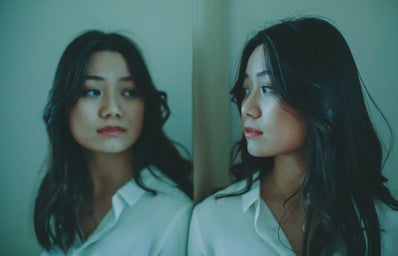“As kids we loved heroes; as adults we understand the villains.”
Have you ever related to villains more than heroes? Does that mean you have succumbed to the dark side? Was that edgy teen phase more than a phase? Don’t worry; it doesn’t mean that! But let’s explore why morally grey characters like the Joker sometimes appeals more than Batman.
As we grow up, we understand the darkness and nuances of this world, and that’s why we can empathise with villains, especially if they’re well-written. They are more flawed, hence more human-like & relatable than the infallible & Perfect Hero. While villains who are evil for the sake of it can be dull, well-developed ones are engaging
Now, these multilayered characters can also be antiheroes or grey characters. Characters who possess both heroic and villainous qualities challenge traditional notions of good and evil. They often operate in shades of grey, making difficult choices and sometimes crossing moral lines in their pursuit. They may do some unethical things, but generally, they’re redeemable. For example, Captain Jack Sparrow. Meanwhile, grey characters are, well, just not flowery and sweet all the time. Mr Darcy from Pride & Prejudice is an example. He was initially brooding, arrogant and unapproachable. Not very ‘hero vibes’. But that doesn’t necessarily make him the bad guy either because he was also honest and willing to change for the better, especially by the end of the novel.
Stories and context also play a major role in determining what a character is. Like Robin Hood, who was a hero even though he was a ‘thief’ and the ones who try to catch him are the villains. In some sense, he can be categorised as an anti-hero, too. Loki and Maleficent are the perfect examples of loved villains and anti-heroes
These characters portray the lines of morality blurring, offering a glimpse into various complexities. They force us to question our own values and to consider the possibility that the binaries of good and evil are not always so rigid because, in real life, people are rarely purely good or purely evil. They often have a mix of positive and negative qualities, and these nuances make them more interesting. And what more? Even heroes with the most promising of light can be pushed into the dark side. Darth Vader is the epitome of this.
Coming back, our favourite villains provide an outlet to express a different side, and their ideas and actions on various aspects reflect how we feel about something that we don’t tell society about, which leads to us relating to them.
“After my inner child has been loved, give my inner teen an axe.”
We all have two wolves within us: one could be seen as the Villain, the cynic, and the other as the Hero, the optimist. But we can optimise this to our advantage, by turning to our ‘villain’ for constructive criticism instead, and ‘hero’ for dedication and inspiration.
Moreover, Carl Jung, a well-known psychologist whom you might know as the founder of the concept of introversion and extraversion, also emphasised the existence of The Shadow. It is a big, unconscious reservoir of our repressed desires and feelings; a part of our personality without which we can’t fully function as a human. The Shadow is what goes awry in the case of criminals such as murderers.
In the book Strange Case of Dr Jekyll and Mr Hyde, Dr Jekyll, a large, well-made man battles between the dual internal personalities of good and evil. The good man Henry Jekyll wants himself to be; and the evil, impulsive, and cruel Edward Hyde. Jekyll knows that the Hyde in him contains urges that are not befitting the man he wants himself to be, and the internal conflict and repression of Hyde feed this darker side until it becomes all-encompassing. The story of Jekyll and Hyde is a great illustration of the ego and the shadow in Jungian psychology. The shadow is the form taken by the aspects of our nature that we dislike, the parts of ourselves we’re ashamed of, and the primal and impulsive parts that we hide from ourselves and those around us.
Therefore, it is imperative to face and hone our Shadow.
“We are all villains in someone’s story.”
Perhaps nobody talks about this much, but letting your light side out too much can also be bad as it gives way to people-pleasing behaviour. What is the point of being a good guy if you’re being used by bad guys? Don’t be a hero to the wrong people, folks!
This also brings me to the saccharine aka ‘too nice’ people who seem fake as a result. And even more dangerous are the ones who are actually just pretending to be nice. Villains who are mean to the face would be much preferable to them, right? Now these are some reasons why villains can be more likeable at times.
To conclude, we can’t run away from our dark side, but we can embrace, balance and strengthen it with the light side to be the main character of our life!
“Understanding why villains are villains is the first step to becoming a hero.”
For much interesting pieces, visit Her Campus at MUJ!


